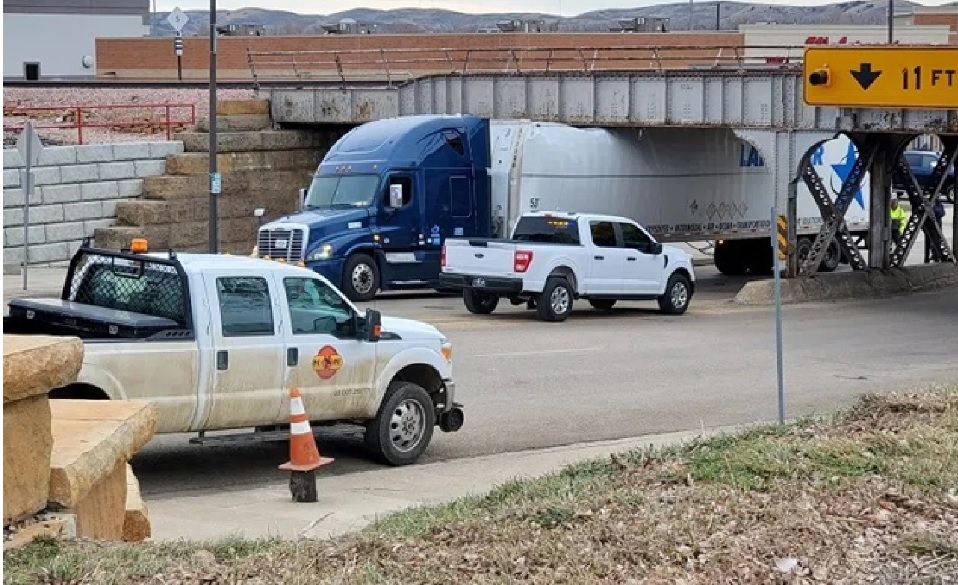PIERRE — Gov. Larry Rhoden has signed legislation to end Pierre’s decades-long headache.
Rhoden’s office announced this week that the new governor had signed Senate Bill 39, part of a batch of bills delivered to his desk. The measure, brought by the South Dakota Department of Transportation, will move the U.S. Highway 14 route from underneath the infamous Pierre viaduct bridge on North Euclid Avenue, and instead move the turn further east down Highway 14 bypass of U.S. 83, portions of which are commonly known as Sioux Avenue.
The measure received unanimous support from the Legislature, with zero opposition testimony through the entire legislative process. The change will go into effect on July 1.
Those utilizing GPS applications will eventually no longer be directed to drive their vehicles underneath the 11 feet, three inch clearance that has developed a statewide reputation for destroy 18-wheelers and RVs.
The bridge has garnered a reputation through the decades of eating inattentive, big-rig drivers. From January 2023 to late November 2024, the bridge had notched 22 confirmed kill shots to unsuspecting vehicle drivers. Local law enforcement suspects that many more have hit the bridge and scurried off without calling law enforcement or before they could be reported.
The bridge’s lust for fender benders has earned it the admiration of at least 25k people, all of whom follow the tongue-in-cheek “Trucks vs. Bridge, Pierre SD” Facebook group. The group had mixed reactions to the news of the law change — while some lamented the new designation, others optimistically — or maybe pessimistically — maintained that the bridge would still find unsuspecting victims.
Even Lieutenant Governor Tony Venhuizen, who has survived many trips underneath the bridge himself, lamented the change.
“It is too bad, that bridge gives us all something to believe in,” Venhuizen joked.
One group that is excited about the change is Pierre city officials. They’ve been pushing for some kind of change by the state to mitigate crashes for years. Raising the bridge or lowering the road are not viable options.
“The Pierre train bridge has a 100 percent record of success versus vehicles for at least a century,” said Pierre City Commissioner Jamie Huizenga. “Hitting the bridge is a bad deal for the vehicles, but it’s also an inconvenience for the rest of our traffic and first responders as it usually takes multiple hours to pry them out from their predicament… Even if we can take the collisions down to one or two a year, it’s a win.”


